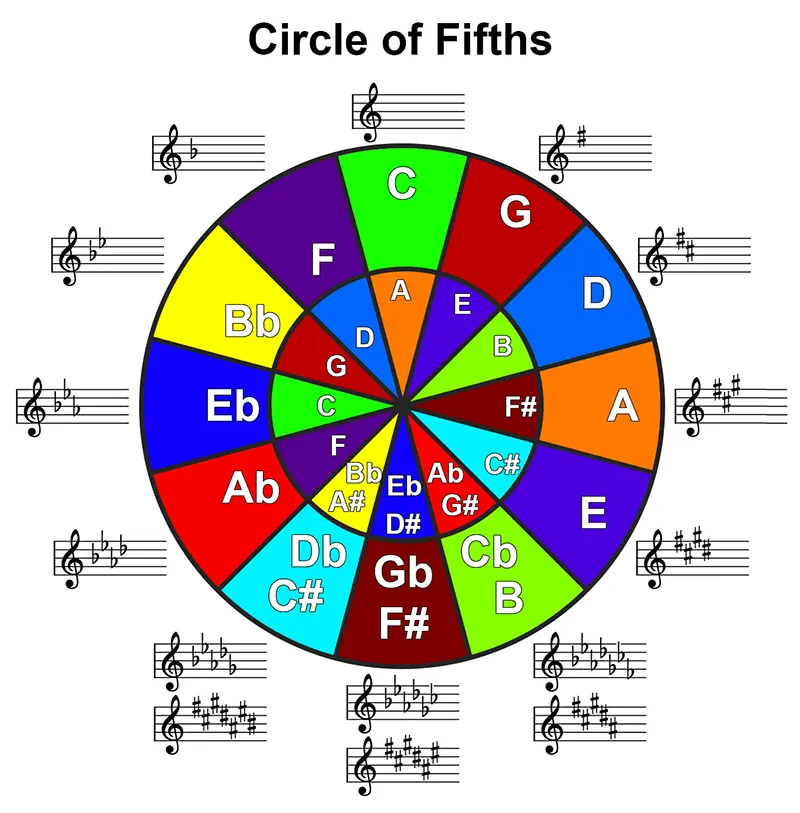This lesson is where it all begins to make sense. Given the previous lessons you can probably guess what its all about at a glance. That’s right! The circle of fifths is nothing more than a relationship chart between all 12 diatonic scales. Lets take a look at the circle of fifths chart. We’ll refer to it as a clock. C will be 12 o’clock.
In the outer circle are each scales tonics and in the inner circle are each scales relative minors or submediants. The order of each scale depends on each scales fifth scale degree. Hence this is why they call it the circle of fifths.

Circle of Fifths Diagram with colors and key signatures
So lets take a look at C Major Scale (12 o’clock). The notes in this scale are C – D – E – F – G – A – B. C is the tonic. A is the relative minor. And G is the fifth scale degree. G is also the tonic for the next diatonic scale (1 o’clock). In G Major Scale E is the relative minor and D is the fifth scale degree. D is also the tonic of the next scale (2 o’clock). This is true about the rest of the scales in the circle and that is why they call it the circle of fifths.
The fifth degree of each scale is like the gateway into another galaxy. In music that modulates, or changes key signatures, the fifth scale degree is a perfect gateway into the next scale because the 5th scale degree is also the 1st scale degree of the next scale.
Now lets take a look at the circle going counter clockwise. Lets start with C Major Scale again (12 o’clock). The notes in this scale are C – D – E – F – G – A – B. The fifth scale degree below the tonic is F which is the subdominant. F is also the tonic of the previous scale F Major Scale (11 o’clock). This makes the subdominant a perfect pathway into the previous scale.
When you get to 5, 6 , 7 o’clock you will notice that some scales overlap. This is because B Major Scale, F# Major Scale and C# Major Scale can each be written two ways. One with sharps (#) and the other way with flats (b). For instance; B Major Scale’s (5 o’clock) notes are B – C# – D# – E – F# – G# – A#. This same scale can be written with flats like this; Cb – Db – Eb- Fb – Gb – Ab – Bb. This is also true to F#/Gb and C#/Db. In the diatonic world you never want to mix flats with sharps because it gets confusing.